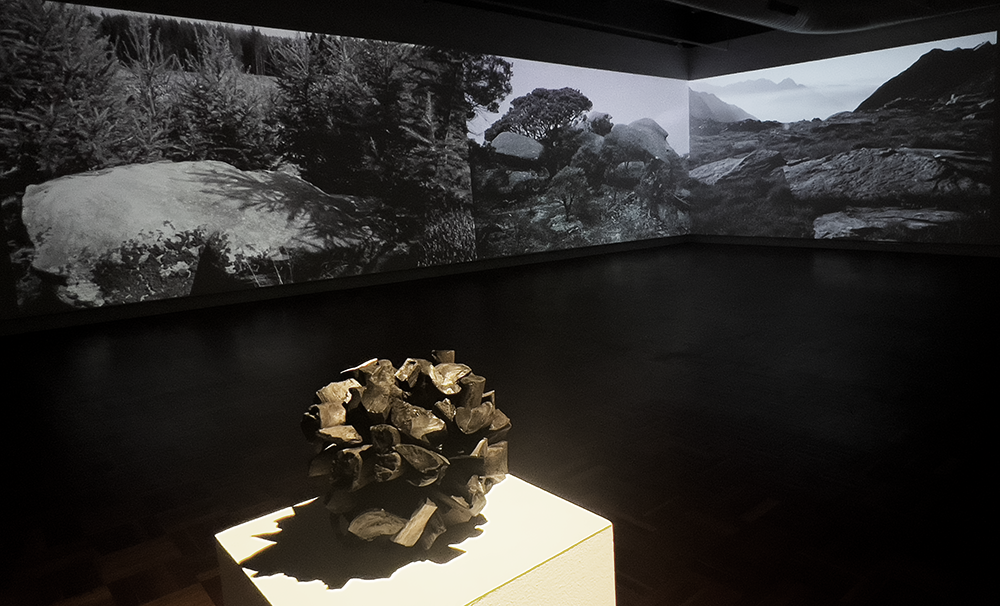
A Proposition towards A Praxis of Treaty with International Country | Portals out of The Garden of Non was made over five years between the UK, northern Italy and lutruwita/Tasmania.
An international art practice as research PhD, developed through the Australian National University & Kingston University London (2019-2024), the combined artistic and written work was presented as an immersive installation at the Australian National University SOAD Gallery (2024). An earlier developmental incarnation of the work was also presented at Stanley Picker Gallery, Kingston University London (2022). See: Diminished culture until we whitefellas decolonise ourselves.
The overall project is a work of nomadic pilgrimage towards the decolonisation of self, through atemporal rock art portals in international country. The deliberate and ironic use of 16:9 landscape format video projection highlights and critiques a delimiting (post)Western cultural blindness, towards the atemporal and immersive cultural wisdom held in rock engravings across international country.
The interdisciplinary installation combines: Sequenced HD Digital Video Works, including 7 x monochrome video projections (each 4m x 5.5m) and 3 x full colour video works on iPads and iPhones embedded within projections, Sound Art, Writing, 3D Carbon Drawing (Sculpture) and Digital Photographic Prints. The written component of the PhD is available to view below.
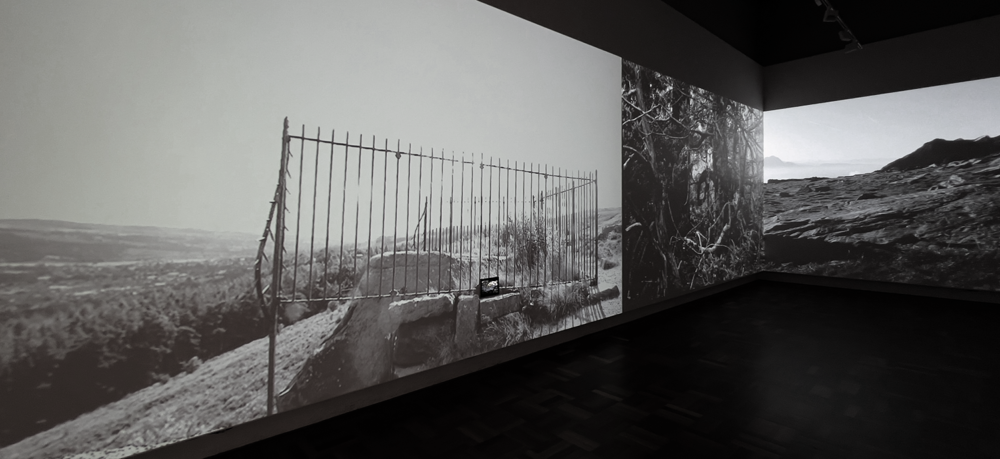

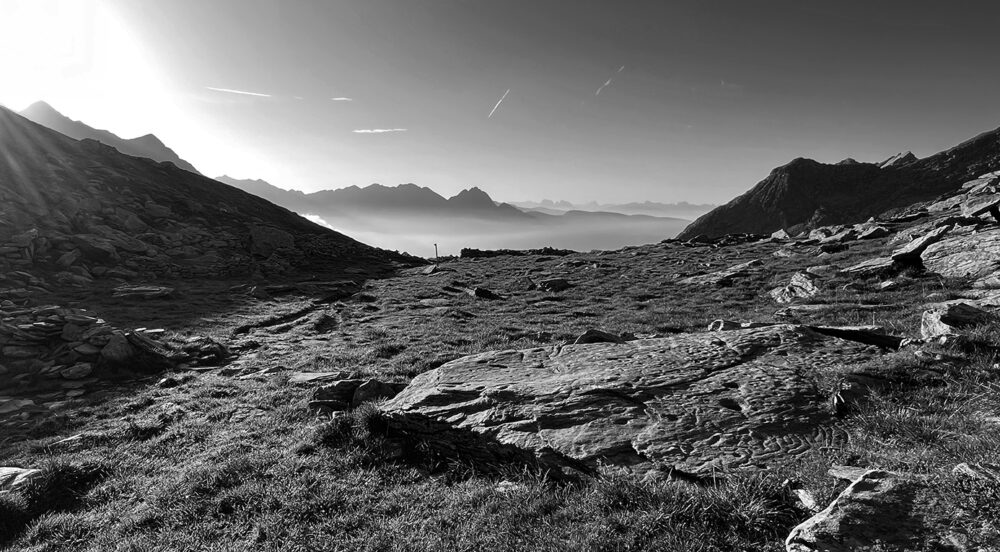
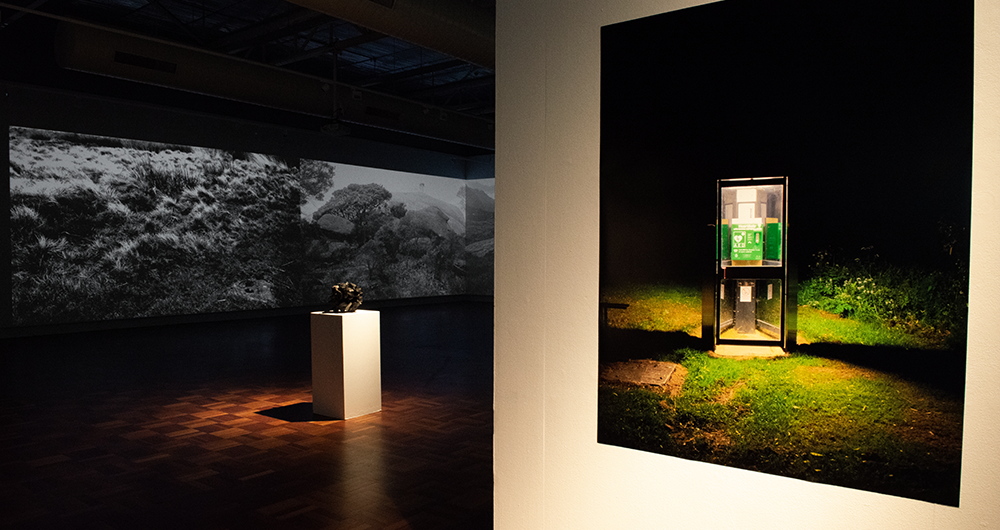
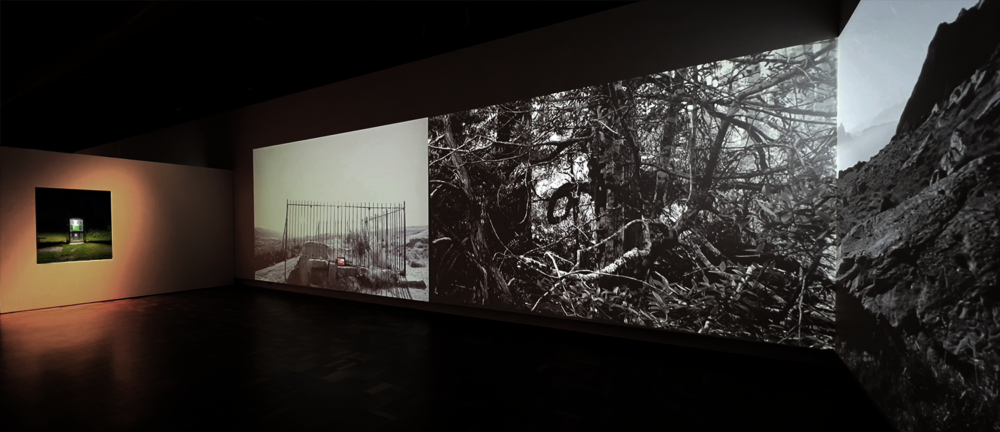
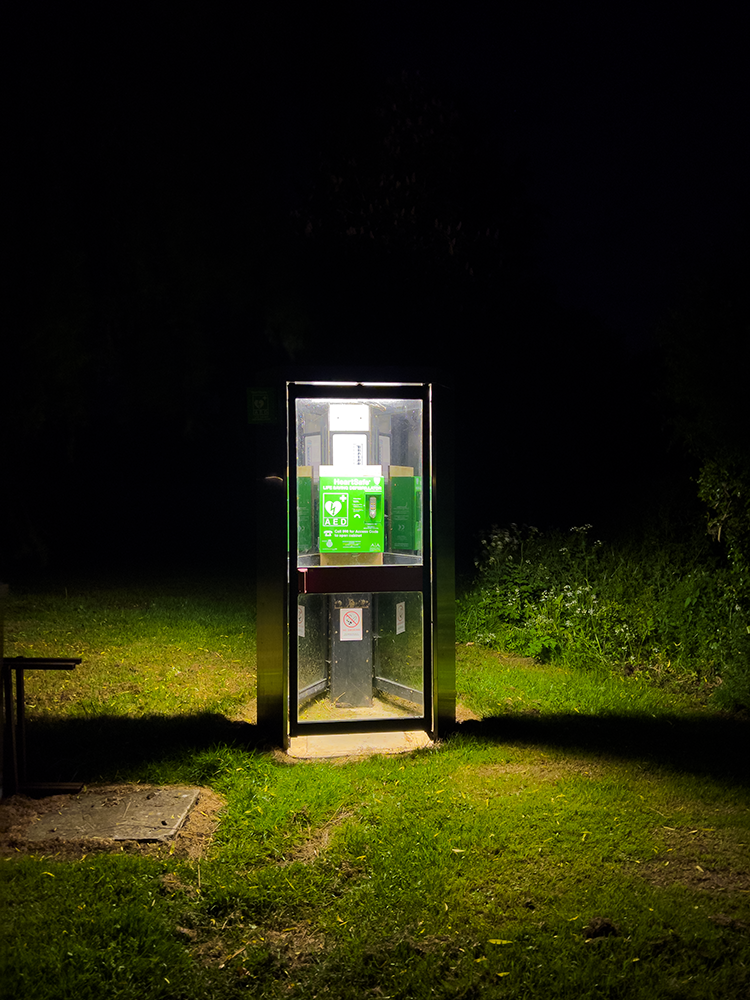
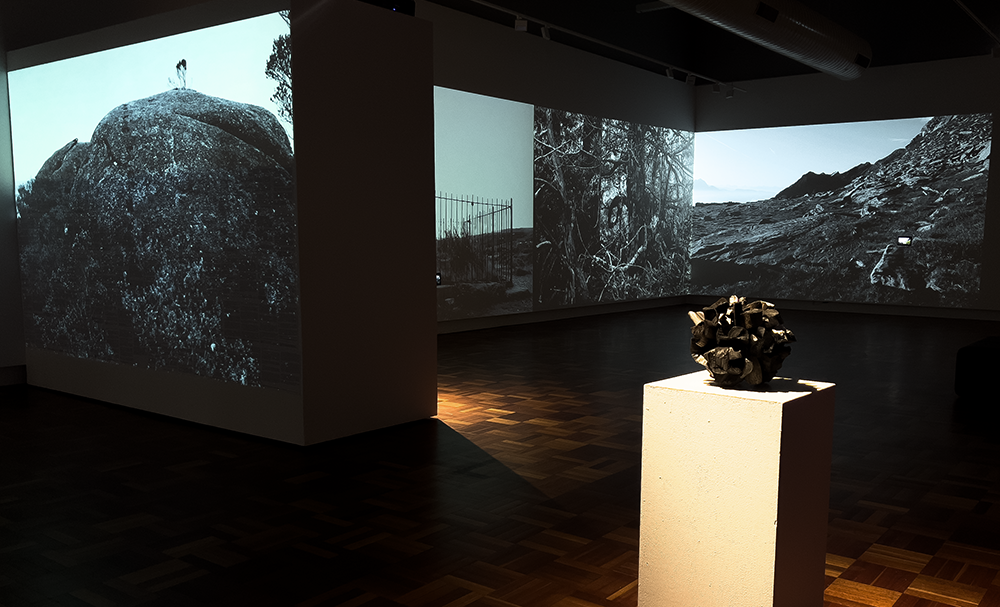
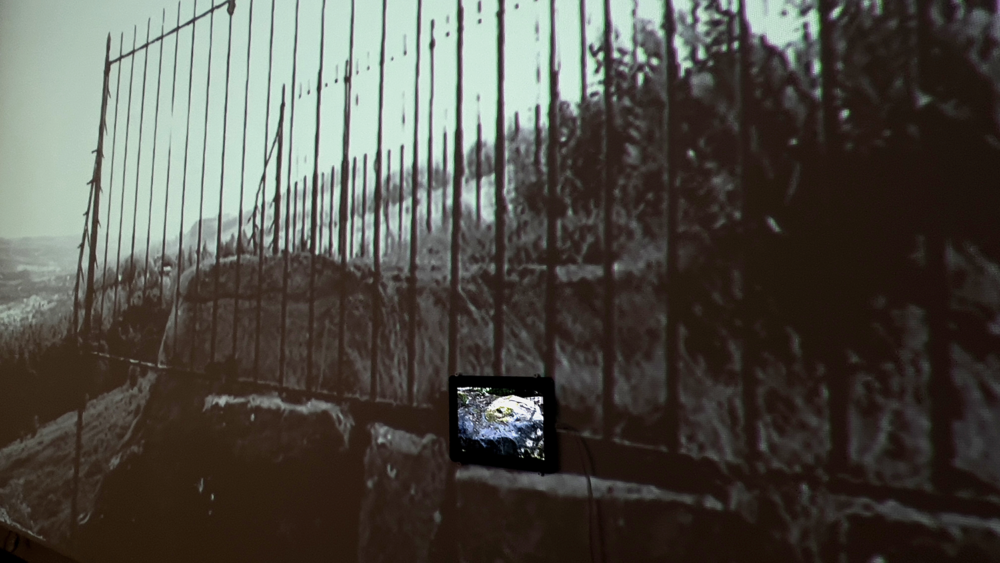
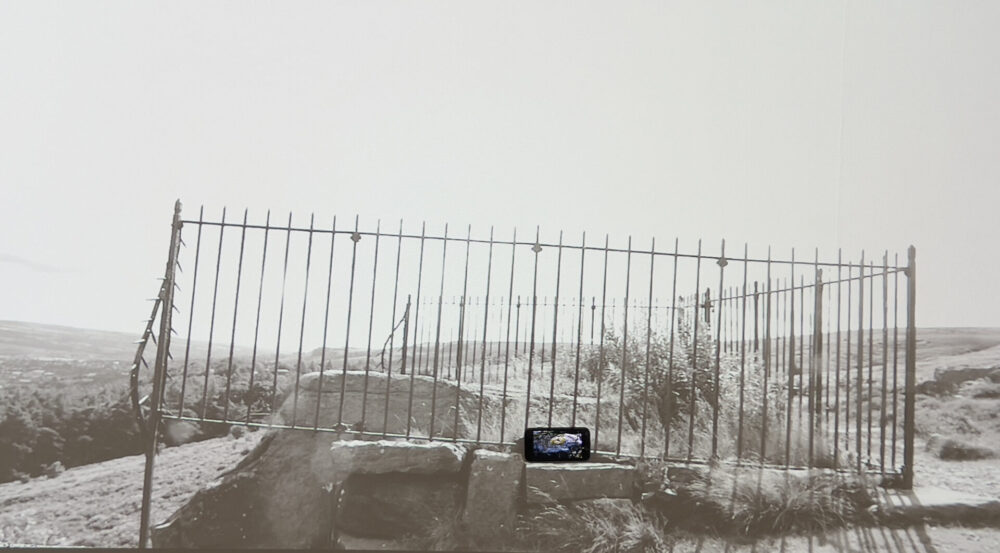
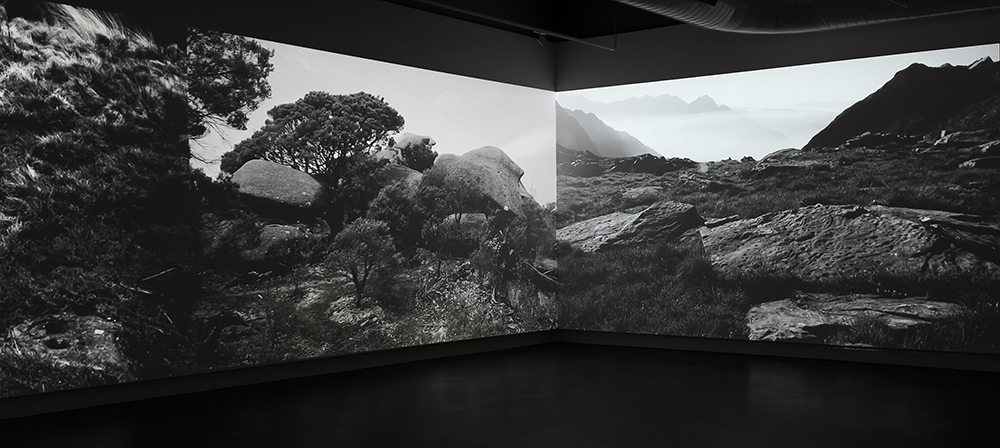
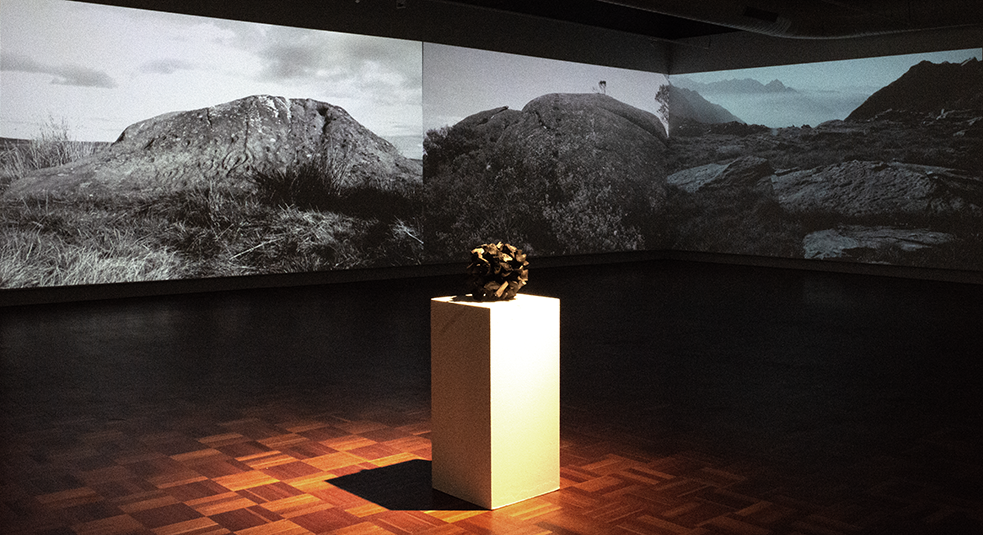
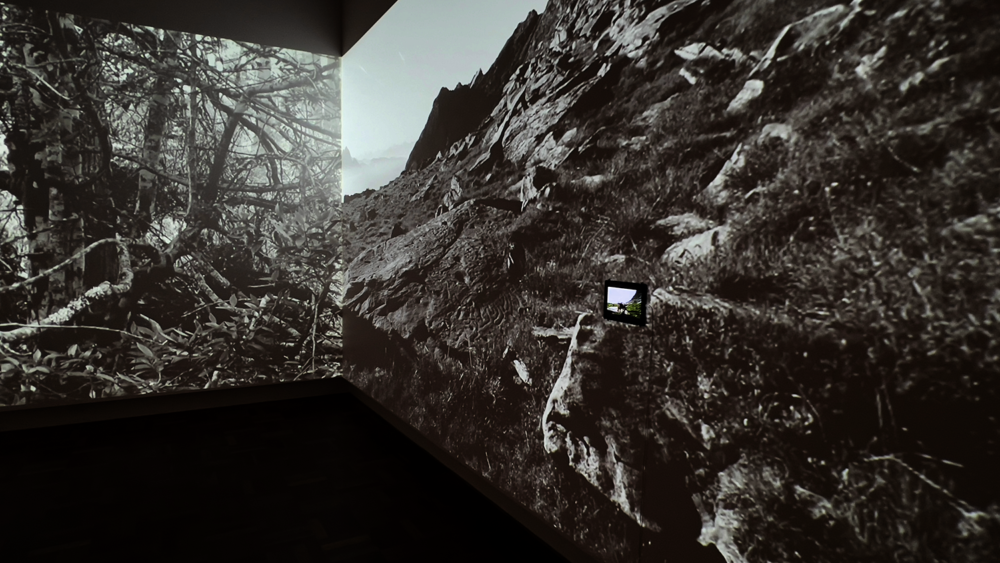
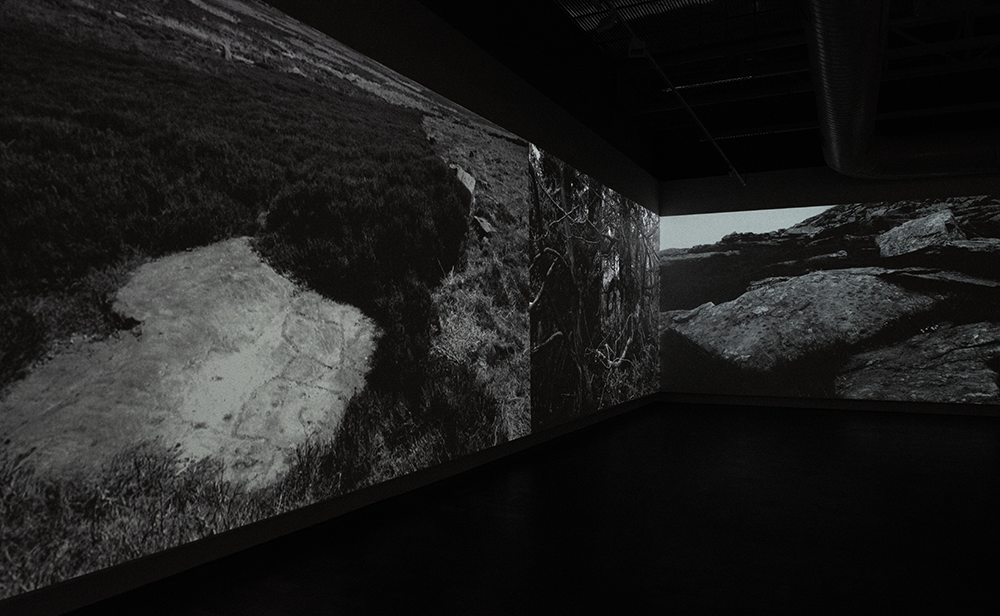
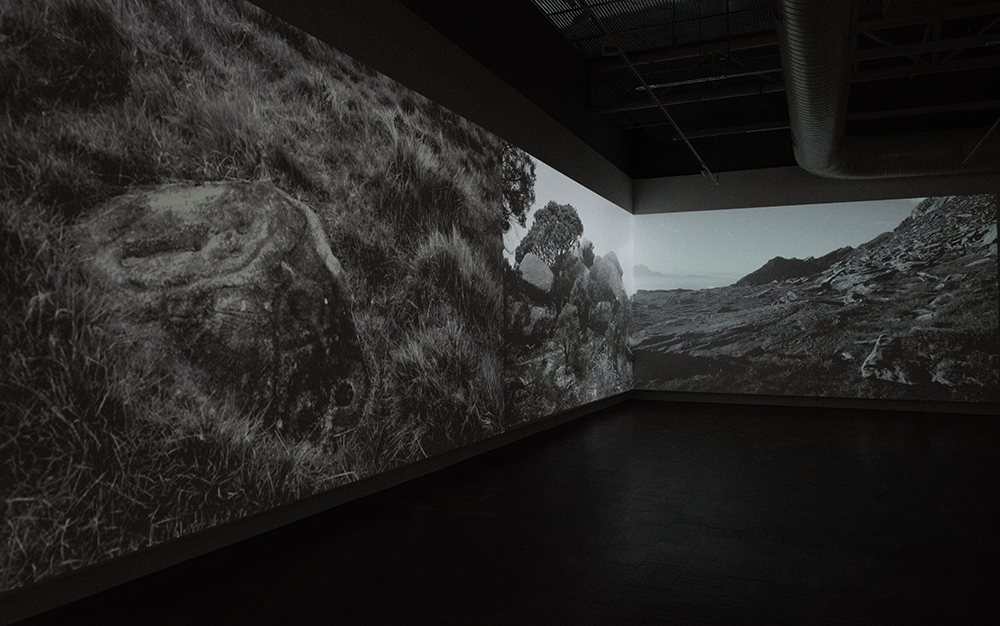
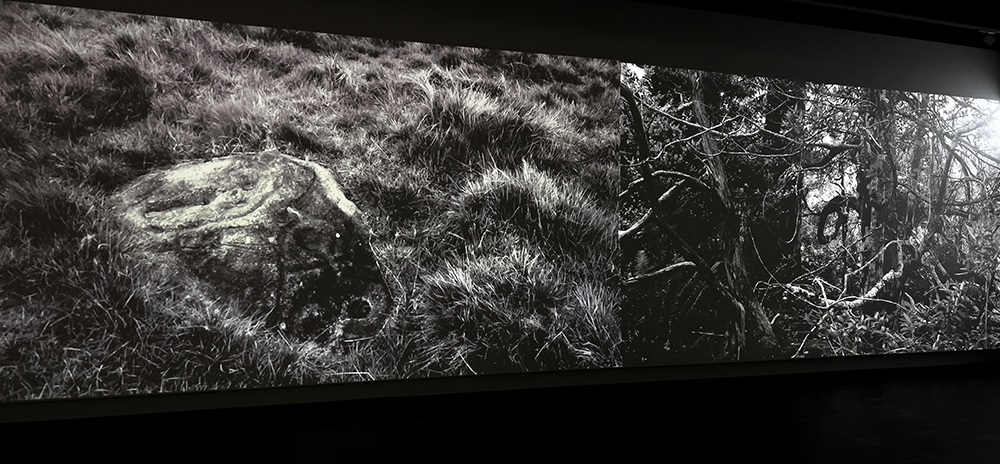


A Proposition towards A Praxis of Treaty with International Country
Portals out of The Garden of Non
Jonathan Kimberley
PhD Doctor of Philosophy
Australian National University (ICCR) & Kingston University London, School of Art.
International Art Practice as Research
lutruwita/Tasmania Australia | Ilkley Moor UK | South Tyrol Italy.
2019 – 2024
PhD Written Component | Full Text Click Here
Abstract
A Proposition towards A Praxis of Treaty with International Country | Portals out of The Garden of Non is a Creative-Practice-as-Research PhD thesis, seeking to decolonise Originary (so-called ‘prehistoric’) rock art (petroglyphs), towards the decolonisation of myself.
The research question: “What is the truth-telling required of (post)Western culture in terms of revaluing the contemporary present of Originary (so-called prehistoric / Neolithic) petroglyphs in the UK and Europe, as portals of decolonisation?”
The thesis is an artistic journey through the atemporal Originary of petroglyphs at Ilkley Moor, West Yorkshire, UK; and South Tyrol, northern Italy; guided through the paragon portal of First Nations’ ‘meenamatta petroglyphs’ in lutruwita (Tasmania), Australia. My research in these three international locations is a solo praxis of transcultural responsibility, grounded in long-term collaborative art praxis with First Nations elders puralia meenamatta Jim Everett (plangermairreenner / pakana), and Gloria Andrews (pakana), in meenamatta country, lutruwita (Tasmania). A descendent of a First Fleet convict from the UK who became a free settler-coloniser of lutruwita in 1808, the project reflects on my personal sense of loss of deep-time ancestral knowledge within my cultural Originary in the UK and Europe.
Archaeology dates petroglyphs in the UK and Europe as being made during the so-called Neolithic “transition” from hunter-gatherer to settler-farmer cultures (c.12,000-3,000BP). However, through the thesis, I suggest that this 10,000 year “transition” harbours far more complex cultural truths denatured through successive waves of Neolithic colonial invasion and contemporary nescience, resulting in an under-recognised deep-time cultural trauma within (post)Western contemporaneity. The result is what I call The Garden of Non. A temporal plane of perpetual self-negation caused by a profound lack of truth-telling to Originary (proto)Western self, evident in the problematic term ‘non-Aboriginal’, which I argue is an inept deference to presumptive and premature (post)Western (post)coloniality and superficial decoloniality. Identifying and occupying this gap in (post)Western cultural gravitas through art praxis, the thesis advocates for a radical decolonisation of atemporal Originary cultural agency held within the petroglyphs of the UK and Europe, which I suggest can be understood as evidence of (de)colonial resistance during the Neolithic. The contemporary present of Originary petroglyphs is paradoxically revalued within atemporal International Country, via extended journeys of pragmatic cultural pilgrimage through all three locations (UK, Italy, lutruwita) as integral to the generative development of the work.
The resultant PhD thesis is One Work combining Writing and Exhibition. Grounded in the immersive immediacy of large-scale monochrome single-shot HD video projections, sound art and journal notes, combined with various forms of critical writing, a sculpture, and photography. The work is intended to evoke the open, rhythmic, recursive, non-definitive and searching form of creative praxis which interrogates dominant (post)Western modes of perceiving time and landscape. This exdisciplinary approach aims at dissolving methodological and cultural knowledge gaps created by the orthodoxies of (post)Western cultural disciplinarity and historicity. Inviting an artistic and cultural engagement through the petroglyphs as portals for the decolonial dissolution of oneself into International Country: being seen by rock art as distinct from looking at rock art.
The Garden of Non describes what I see as the temporal plane of perpetual self-negation by (post)Western culture, which I argue is a cultural condition caused by a profound lack of truth-telling to Originary (prehistoric) (proto)Western self. The Garden of Non is descriptive of what I argue is the predominant self-inflicted (post)Western cultural impediment to decolonisation, manifest through millennia of colonial invasions across the UK and Europe throughout the Neolithic (c.12,000 – 3000 BP). The Garden of Non is both causal and consequential of the problematic contemporary neologism non-Aboriginal, which I argue is an inept deference to presumptive and premature (post)coloniality and superficial decoloniality; a clear signal of (post)Western culture’s perpetual (de)colonial impotence in relation to the inherent gravitas and indelible transcultural international ethics of First Nations cultures.
Portals Out of the Garden of Non | The Exhibition Installation
The Written & Installation components of the overall PhD thesis are One work. The Installation Exhibition comprises:
Sequenced HD Digital Video Works, including 7 x Monochrome Projections (full wall 4m x 5.5m) & 3 x Full Colour Video works on iPads and iPhones embedded within the projections.
3D Charcoal Drawing /Sculpture, 300 x 300mm.
Immersive Sound Art, recorded during the research journeys, sequenced and mixed with bass guitar in the studio.
NAD Stereo + Subwoofer HiFi system and iPod, playing the Sound Art.
2 x Digital Colour Photographic Prints, dimensions each: 1200 x 900 mm.
Written Component of the Thesis embedded in one projection and accessible as Artist eBook online via QR Code in the installation.
The overall creative practice is deliberately articulated as an immersive and inverse critique of presumptively benign (post)Western perspectival viewpoints, whereby the audience is being seen by the petroglyphs of International Country; through the allegorically bidirectional portals of large-scale HD digital video projections, an immersion of sound art, and a metaphorically located ‘self’, as small 3D charcoal drawing (sculpture).
The installation invites the audience to become unwritten. I deliberately interrogate presumptions about ‘landscape formats,’ utilizing 16:9 video works within the thesis, highlighting such perspectivism as an inherited ‘cultural condition’ that is ultimately inadequate and anathema to the emulsion of atemporal and aperspectival Originary and First Nations Country. The use of ephemeral video projection is deliberately a non-invasive and contactless medium in terms of respecting the inherent efficacy of rock art and the importance of conservation. Aspects of the thesis and some of the works also articulate certain invasive and perspectival failures of (post)Western cultural (dis)respect for petroglyphs in terms of conservation. The use of 16:9 video projections of International Country, perhaps also challenges the audience to reconsider what might be their own benign ‘landscape presumptions’ about looking at the videos, at land, place, Country; and instead allowing themselves to be seen by and immersed inthe petroglyphs through the work. The petroglyphs themselves are the portals out of The Garden of Non.
© Copyright by Jonathan Kimberley 2024. All Rights Reserved.
Acknowledgements
Special thank you to: puralia meenamatta Jim Everett (plangermairreenner / pakana)
and Gloria Andrews (pakana) for their love, wisdom, and ongoing cultural guidance.
The PhD research was developed through the Australian National University, College of Arts and Social Sciences (Interdisciplinary Cross-Cultural Research), Canberra, Australia (2019-2024); and Kingston School of Art, Kingston University London, UK (2022).
(NB: The research was significantly impacted and delayed over 2 years (2020 / 2021) as a result of Covid 19).
Thank you to my panel: Dr Maya Haviland, Prof. Howard Morphy, Prof. Chris McAuliffe, and Dr Bill Balaskas, for their advice, counsel, and unwavering support.
Special thanks: Bill Balaskas and Kingston School of Art, Kingston University London, for generously supporting my residency as a visiting researcher (April-September 2022).
Thank you to all staff and peers at the ANU Centre for the Arts and Social Sciences. Thanks also to Assoc. Prof. Chaitanya Sambrani, and Megan Hinton and team at the ANU School of Art & Design Gallery for generously hosting my PhD Exhibition Installation 1 – 23 May 2024.
Special thanks also to Paul Bennett for his warm and knowing welcome in the UK; and to my partner Danielle Hanifin.
I acknowledge the unceded First Nations meenamatta country in lutruwita (Tasmania) Australia; and Originary International Country in West Yorkshire, UK, and South Tyrol, Italy, where the thesis was developed and created. I also acknowledge the unceded First Nations Ngunnawal and Ngambri Country (Canberra) Australia, where the thesis was developed and presented.